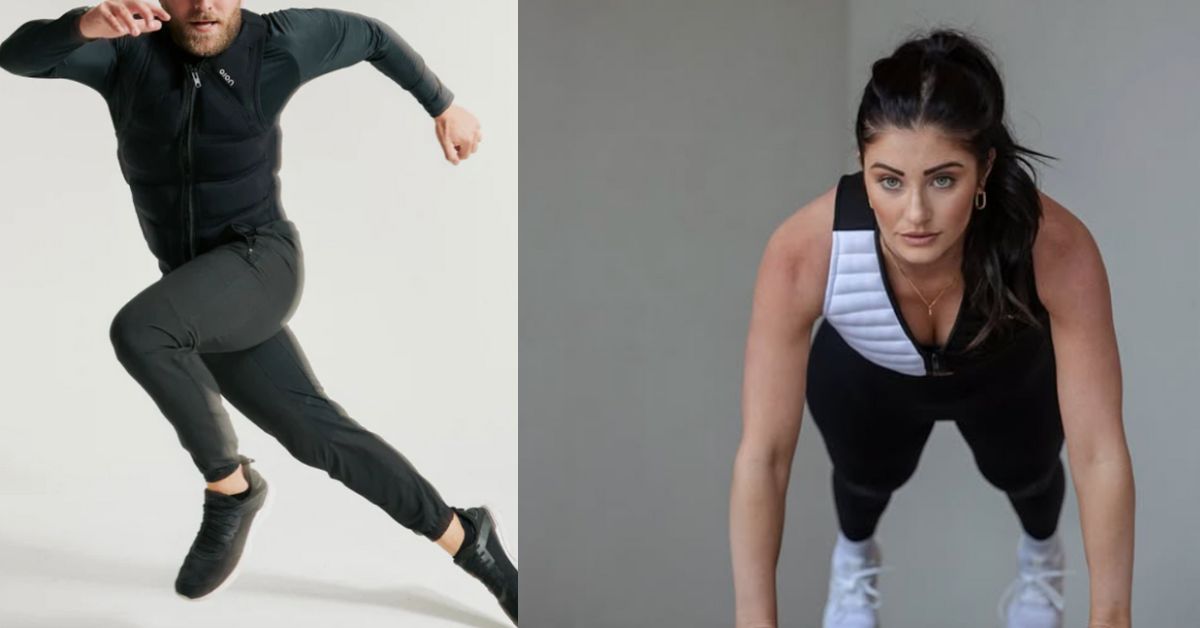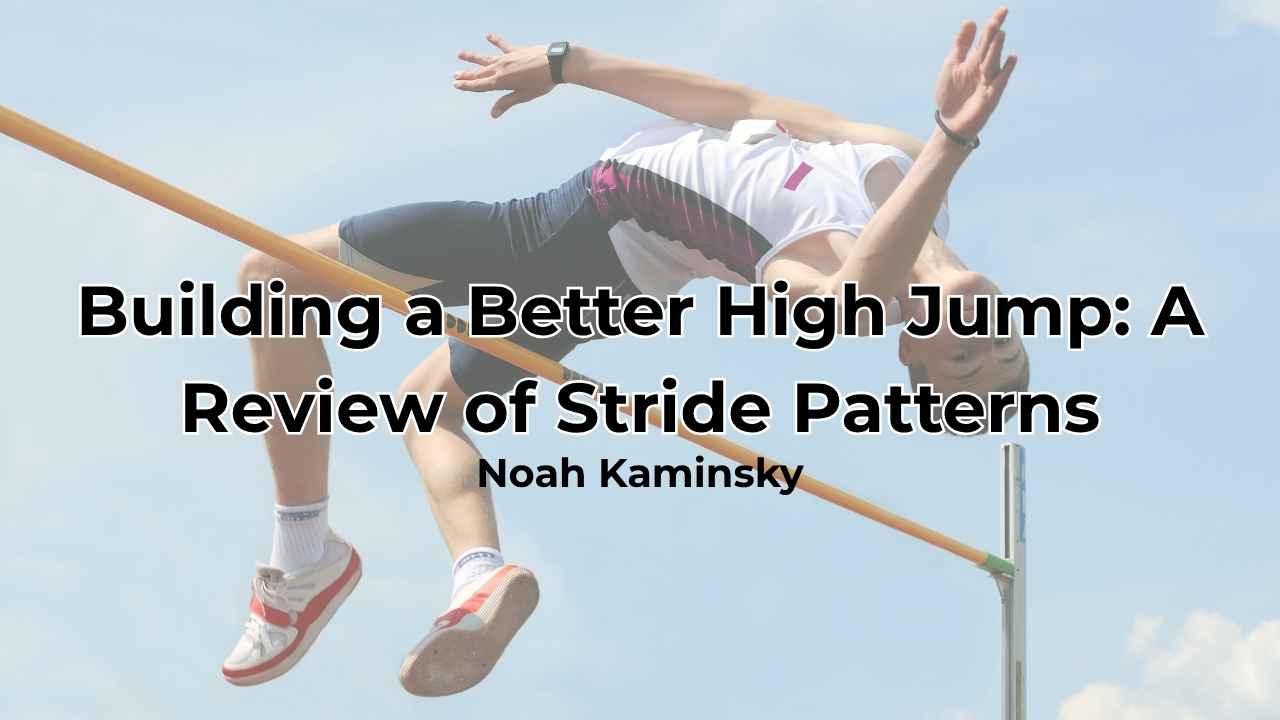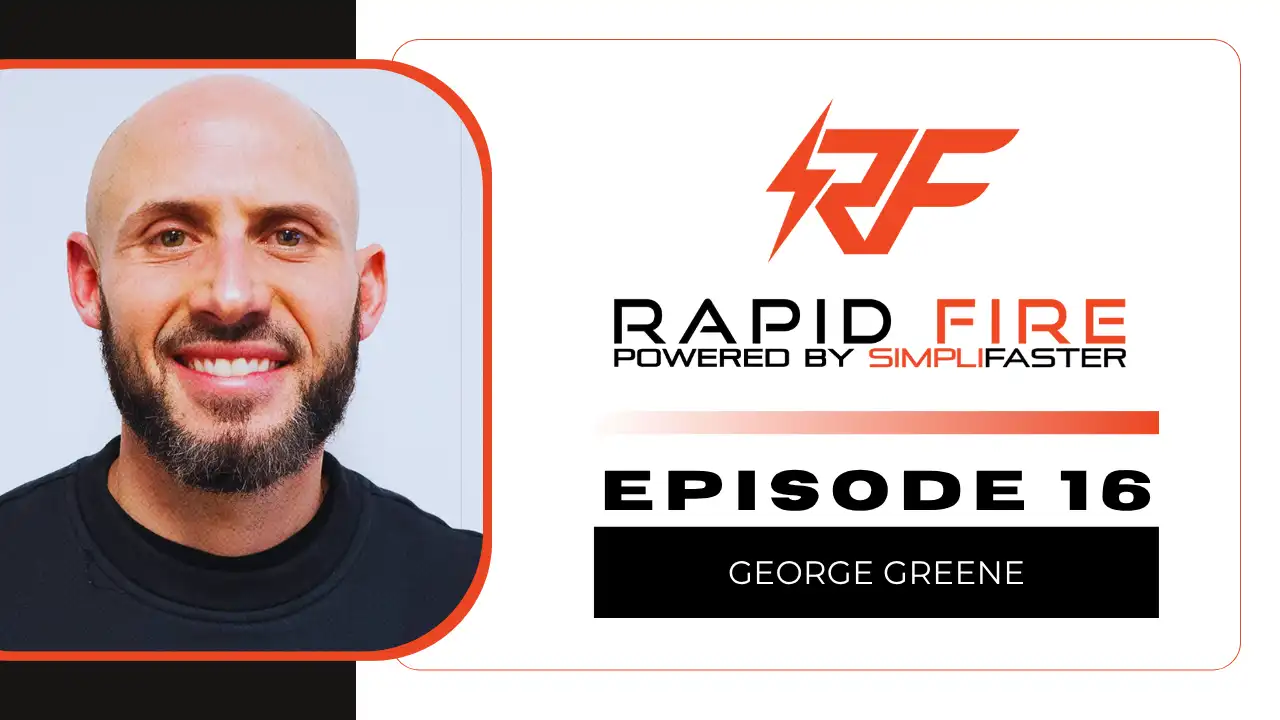Let me kick this review off by saying I think we’ve all subconsciously written off weighted vests as something siloed to dips, chin-ups, and walking. But I’m here to tell you, loaded garments are boomeranging back with enhanced designs that absolutely have performance implications. This is because loaded movement training can unlock a huge range of benefits that span speed, strength, endurance, coordination, breathing, additional metabolic demands, and more!
The use of weighted vests certainly isn’t new and neither is the idea of loaded movement in exercise, even if these concepts have gone through something of a resurgence in popularity in recent years.
Oftentimes, however, breakthroughs can be made by reexamining or reimagining older training modalities into something new entirely. A great example of this is coaches dismissing the idea of reactive surface or “instability” as a training modality simply because older technologies—like the Airex pad or BOSU ball—were fairly primitive, crude tools that didn’t deliver on their promise in a meaningful way.
Then, WAFF Studio came along with the “smart phone” version to the aforementioned “flip phone” versions of sensory pads and completely reinvented what was possible in the space.
In a similar, classic case of what is old is new again, Aion is pushing the envelope forward, forcing people to rethink the place they held weighted vests—and possibly loaded movement—in their minds. If you aren’t familiar with this emergent space, Aion is a weighted vest company (and soon to be focused on garments on the whole) that has reimagined the concept for better fit, performance, and increased benefits.
In a classic case of what is old is new again, @aiongear is pushing the envelope forward, forcing people to rethink the place they held weighted vests—and possibly loaded movement—in their minds, says @RewireHP. Share on XIn this review, we’re going to explore two main components that are critical for coaches and athletes to grasp in order to understand the value Aion holds on the training side:
- Answering the question of what exactly Aion is doing differently to reconceptualize the notion of a weighted vest.
- Providing a short and sweet guide on the benefits of loaded movement training in this vein.
How Is Aion Different Than a Traditional Weighted Vest?
Well, for starters, all it takes is looking at—or trying on—a traditional weighted vest to answer that question. There’s a huge difference in the cumbersome weighted vests meant for the most basic of exercise (like weighted chin-ups), in comparison to the results, comfort, and versatility Aion can deliver.
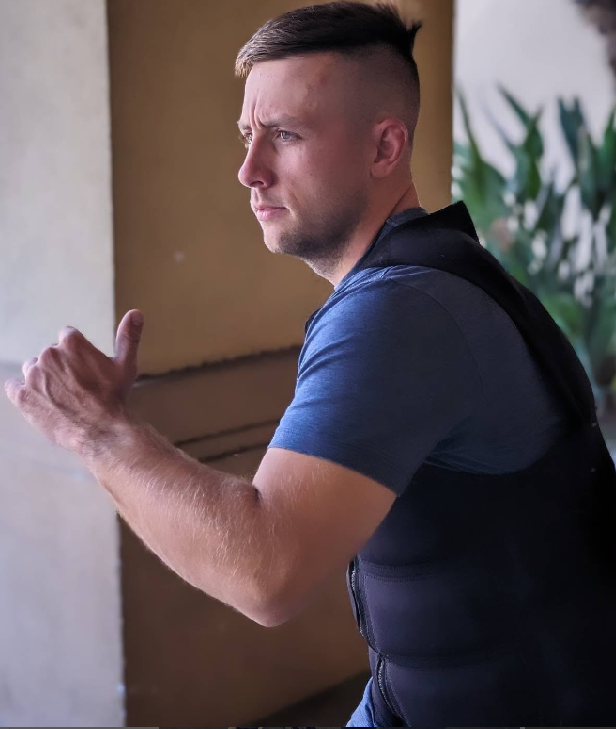
Image 1. Even a small added load can add additional benefits to everyday movements like walking, running, or sprinting.
This all starts with the design difference.
Traditional weight vests excessively load users and distribute the load in a way that can promote poor posture and may contribute to pain and dysfunction. They generally load up one area, like the chest and shoulders, rather than evenly distributing the load throughout the torso. This can often reinforce postures that contribute to pain, not to mention the load flops around when the user engages in dynamic movement.
Aion, by contrast, offers a fractional load (approximately 3-5% of bodyweight) that’s distributed more evenly and ergonomically across the body. What this means is that it’s far, far more comfortable to wear. The company even offers a lifestyle, Boardroom vest that’s comfortable enough to be worn throughout the day. It’s not just about comfort, either—the comparatively more ergonomic design means that Aion reinforces better posture along with the muscular recruitment of the thorax/core musculature associated with that improvement.
The comparatively more ergonomic design means that @aiongear reinforces better posture along with the muscular recruitment of the thorax/core musculature associated with that improvement, says @RewireHP. Share on XThe fractional load really is the critical piece because it allows users to sufficiently challenge themselves in movements, exercises, and activity while not being so heavily (or poorly) loaded across the body to compromise the quality of the movement at hand. Try sprinting, jumping, cutting, cycling for hours, playing a sport, or changing direction in a traditional weight vest that slaps across the body and you’ll understand exactly what I mean.
Yes, there are some movements that some may want to really load up—like a chin-up, for those strong enough. However, the fractional load is a perfect stimulus for the lion’s share of the population (athletes included), and traditional weighted vests aren’t even ideal for the few movements users may really want to load up. Dip belts are actually a better option for this, as they aren’t as limited in their load-bearing potential.
In my eyes, I view traditional weighted vests as an all birds, no stones commodity. Aion offers more ideal resistance and a form-fitting design ideal for the vast majority of movements, with a simple dip belt being a fine investment for those who are strong enough and wanting to load up a couple different movements (e.g., dips or chin-ups).
Speaking of the meat and potatoes, as a coach I’ve really found value in the ability to have athletes get more out of every movement simply by adding in the vest where it makes sense (e.g., sprints, jumps, bodyweight exercises, chin-ups, isometric holds, and more)—all this while not having to necessarily change anything else about the movements themselves.
Adding just enough resistance to dynamic movements like sprinting or jumping forces the athlete to move with more intent to accomplish the movement task, which I’ve seen translate to results on the court and field.
In some athletes that tend to have less thoracic involvement in their gait cycle (e.g., not enough rotation or arm action) and other movement patterns, I’ve seen the vest help cue this automatically, without me having to coach it. The best kind of cues are the one that involve minimal thinking, so in my book that’s been a bonus win.
The design being ‘form fitting; means training in it has been comfortable with athletes echoing this across the board—we’ve gotten incredibly positive feedback from clients in all of these areas, but especially this one.
Outside of my combat sports athletes, I personally don’t use the weighted vest a great deal for additional strain adaptations, but additional metabolic taxation and endurance benefits are certainly going to be a factor for many coaches.
In addition to my own experience, batteries of tests slotting Aion vs. a control group have consistently shown Aion to promote higher levels of metabolic taxation via load and heat benefits (including elevated heart rates, caloric expenditure, increased cardiorespiratory demand in the form of pushing users into higher zones, and more).
Expanding on the cuing benefits noted before, the form-fitting design not only reinforces this, but in my experience also helps “teach” movements. One particular example of this would be the load adding more intent into many movements, like the sprint work I pair it with as well as running mechanics in general. The Aion vest helps cue early forward lean or acceleration angles in sprinting, as well as the aforementioned arm/thoracic involvement in running. This is just one of many examples.
The @aiongear vest helps cue early forward lean or acceleration angles in sprinting, as well as the arm/thoracic involvement in running, says @RewireHP. Share on XIn one case, resisting the action can help promote more intent in future unloaded sets by driving additional muscular and motor unit recruitment. In other cases, the vest can also help coordinate static and dynamic movements (e.g., the aforementioned posture for sprinting) by loading the tissues of the thorax/core. I’ve seen athletes make improvements in movement mechanics over time as we’ve integrated the vest in training.
One final differentiator is that the three-dimensional, form-fitting nature of the design seems to help promote diaphragmatic breathing. The sensory effect of the vest “hugging” the appropriate parts of the ribcage helps automatically promote the type of breathing mechanics that some training schools of thought, like P.R.I., attempt to address via manual techniques. The vest hugging (without constricting) the thorax with an evenly-distributed load are the key drivers behind this.
What’s the Deal With Loaded Movement Training? Why Is It Beneficial?
While some coaches are quick to dismiss tools that have come along for the ride in the current wave of functional training (including buzzwords like “fascial training”), it’s important to think critically and not throw the baby out with the bathwater just because a training modality is associated with something else.
For starters, the idea of resisted movement training has been around forever. There’s a significant body of research supporting the benefits of resisted sprinting, as one common example everybody recognizes.
As discussed previously, resisting appropriate movement patterns can help promote more intent in these movements, leading to better outcomes in speed, velocity, and power outputs.
Loading movements can also help coordinate them and capture appropriate joint angles, as seen in the sprinting example that usually results in better, acceleration-friendly positions. This benefit may also come in the form of additional—or more ideal—tissue recruitment strategies that facilitate using/activating the right muscles in the right chains at the right time. The additionally load and thoracic cuing no doubt recruit more musculature (though some further EMG studies would be interesting to test this hypothesis).
Loading movements can also help coordinate them and capture appropriate joint angles—as seen in sprinting—which usually result in better, acceleration-friendly positions, says @RewireHP. Share on X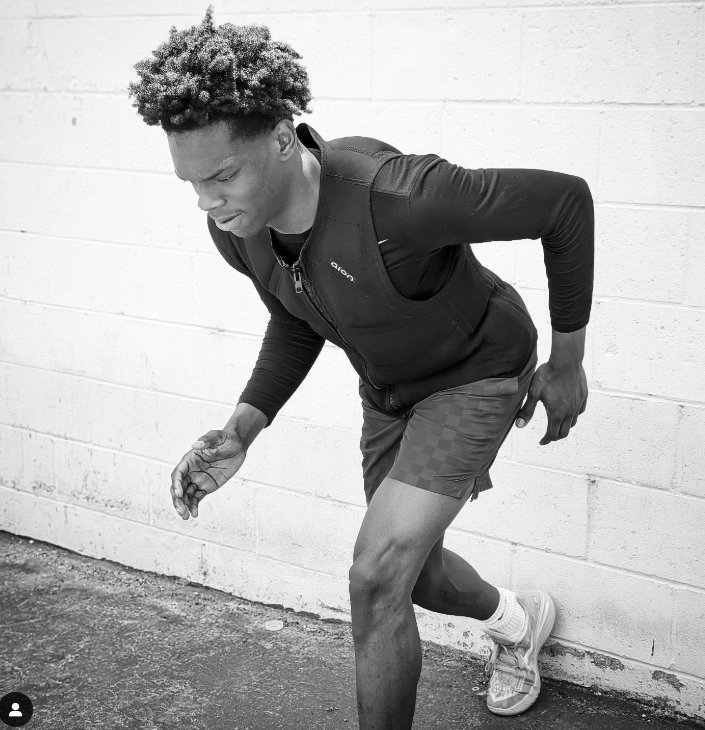
Image 2. The new wave of weighted vests adds enough load to challenge and teach movements, while being form-fitting and ergonomic enough in design so as not to detract from the quality of the movement. Say goodbye to cumbersome vests that slap your chest and back and cause neck pain if you try to speed up your movement.
Many examples of this exist outside of using weighted vests, often integrating tools like the Vipr, OHM Dynamic, aquabags, VertiMax, 1080 Sprint, pool training equipment, and more.
Loading traditional strength movements—like a dip, chin-up, or push-up—can result in more muscle activity, leading to more strength gains. This is fairly straightforward, and can be seen at virtually every gym across the world. The right application may also mean a higher metabolic cost associated with unloaded movements from increased muscular and cardiometabolic demands.
In general, the concept of loaded movement training isn’t unique to weighted vests—a proven commodity—and shouldn’t be thought of as novel or new…even if new and novel ways of integrating it exist (sometimes with varying degrees of effectiveness).
How to Integrate Loaded Movement Training
There’s a great deal of room for creativity here that can lead to meaningful results. This can take shape in the form of simply loading daily activity with the vest (e.g., walking or jogging), resisting dynamic movement patterns (ala sprinting), or even loaded sport-specific work. I’ve seen some quality R.O.I. having some of my football players run routes with the vest, or my hoopers perform deceleration drills for separation while wearing the vest. More specifically, this is providing additional forces to decelerate and control before re-accelerating, on top of the coordinative, kinesthetic “teaching” benefits.
Loaded movement training usually takes the form of loading a bodyweight exercise or an entire movement pattern, like a jump. Past iterations of weighted vests were really only engineered to be effective at loading the former—and even then, often left a lot to be desired.
But even in older, more crude variants, the idea of loading movement is soundly rooted in the most basic training concepts of progressive overload. At the end of the day, we’re all just loading movement—you can choose to do it with a machine (such as a bicep curl machine), or a weighted vest. But it’s all rooted in the same sound scientific principles.
Again—a weighted vest isn’t the only way to skin the cat, either. More recent alternatives include wielding tools like the aforementioned Vipr, dumbbells, or kettlebells to load dynamic movements in a more elastic capacity as opposed to the more frictional, muscular-driven movement strategy they’re traditionally used to achieve.
At the same time, bands, sleds, and pulley systems have offered solutions for resisting general and specific sporting actions.
Final Thoughts
I wanted to be sure to include a brief summary advocating for loaded movement, as I think it really helps users—be it athletes, coaches, everyday individuals, or those with home gym setups—understand the value of loaded movement tools. Once that is framed, you can easily see why integrating loaded movement into your training is a good idea and how to go ahead and do it.
In my experience, Aion is a highly effective, effortless, portable, straightforward example of loaded movement that anyone can integrate. Athletes and coaches like me—who fold in all kinds of loaded movement—will find just as much use for it as those in the general population looking to get more out of their daily activity or current training routine.
In my experience, @aiongear is a highly effective, effortless, portable, straightforward example of loaded movement that anyone can integrate, says @RewireHP. Share on X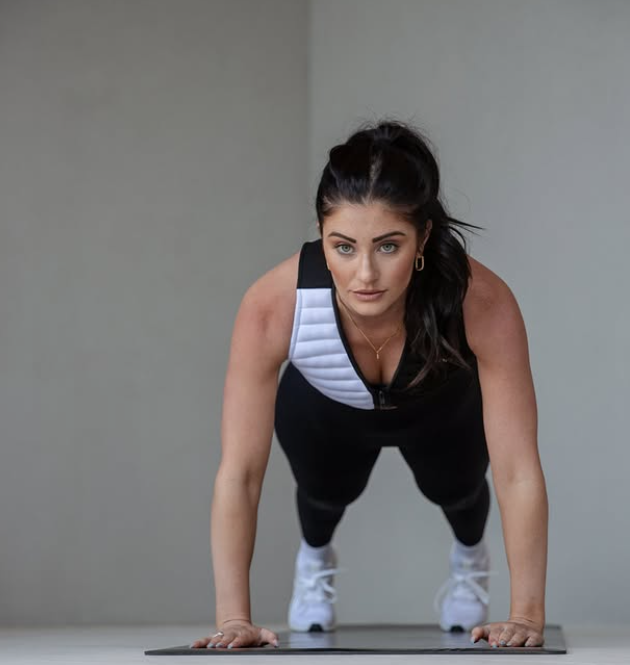
Image 3. In addition to loading sports actions like sprinting, routes, and agility, the vest can still be added to bodyweight exercises, isometric holds, thorax-pelvis integration core work, and traditional weighted vest applications.
Currently, the company offers a training vest for both men and women (these are what I have been using in my own practice). They also have the aforementioned “Boardroom” vest as a lifestyle offering, which is aimed at getting more strain out of one’s day-to-day while being stylish enough so as not to look like a weighted vest. This can help motivated people squeeze additional caloric expenditure out of their daily activity, while also reinforcing the positive postural aspects covered earlier.
As far as what the future holds, the company is currently looking at additional garments that can further their primary use cases and large array of applications.
It’s very much an emergent market, with only Omorpho in the space as the other major player. Omorpho boasts a wider array of load and color options, though Aion offers more in the way of the challenge provided by the collective load and fit. Having personally purchased both brands, Omorpho’s fit was regularly considered less comfortable by my clients and their string method of tying the vest seemed a little under-thought and cumbersome. The vest is also less pliable and doesn’t move “with” the users’ movements as smoothly. In addition, Aion’s gear seems to be more durable when exposed to the rigors of training.
Earlier to market, Omorpho also has other garments (such as lightly loaded lower-body wear), though Aion is also set to expand their offerings and debut items in line with these. At the end of the day, you can get quality training in using both brands and they each represent a significant upgrade over classic weighted vests.
In summary, I believe that training with the Aion vest offers value in the form of additional cardio benefits, metabolic expenditure, strength gains, speed and power development, teaching movement, cuing proper posture, and even reinforcing sound breathing mechanics. I’ve really enjoyed using it with my clients and in general am an advocate of well-designed and implemented loaded movement training in all the forms it can take.

